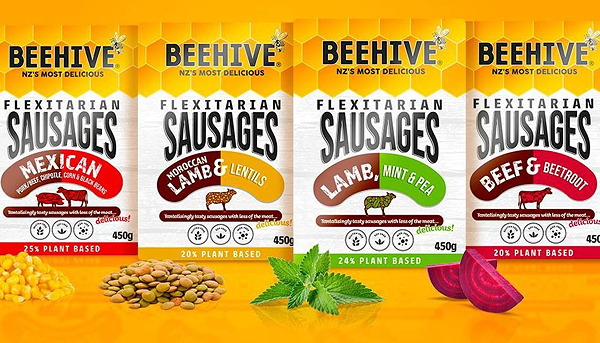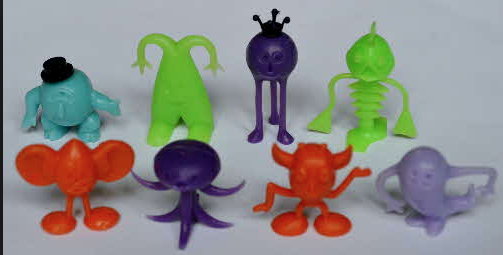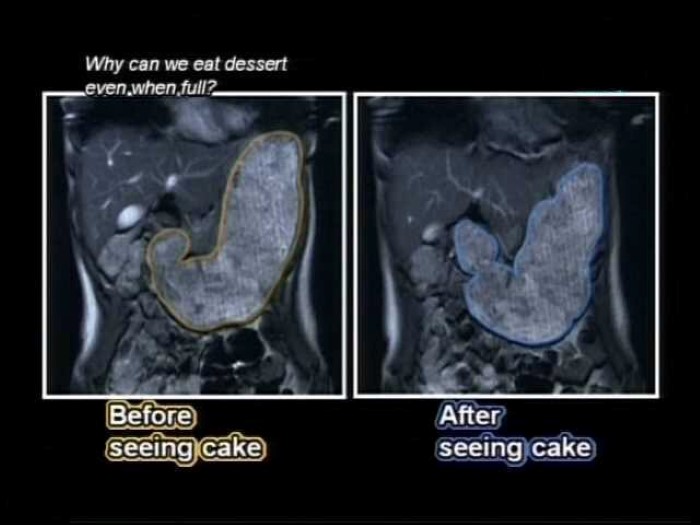Food
Youngster got high on hamburgers
A strange affliction to suffer from.
The Alexandria Town Talk - Jan 14, 1976
Posted By: Alex - Mon Aug 12, 2019 -
Comments (2)
Category: Food, Health, 1970s
Flexitarian Sausages
Last year, New Zealand sausage maker Beehive debuted a line of sausages that it claimed were 'flexitarian'. This term describes a diet that is semi-vegetarian. So, a plant-based diet that only occasionally includes meat.What made Beehive's sausages flexitarian? According to the company, it was because they were only 80% meat, and contained 20% plant-based filler.
By that standard, you might qualify as flexitarian if you only eat 4/5 of a sausage, instead of the whole thing.
More info: Beehive on Facebook, newshub

Posted By: Alex - Mon Aug 05, 2019 -
Comments (2)
Category: Food, Dieting and Weight Loss
Donut Queen of 1951

Source.
Posted By: Paul - Fri Aug 02, 2019 -
Comments (4)
Category: Beauty, Ugliness and Other Aesthetic Issues, Contests, Races and Other Competitions, Food, 1950s
Crater Critters and Kin

Between 1959 and 1977, an Australian company based in Melbourne called Rosenhain and Lipmann (commonly known as R&L) designed and manufactured unique and innovative toys that became hugely popular both in Australia and overseas.[1] R&L started out making snap-together items that worked like tiny plastic model kits that didn't need any glue and were issued in a clear glassine bag, inside Kellogg's cereal boxes. Between 1959 and 1977, over 70 different sets were released and it is estimated that about one billion R&L toys were delivered around the world.
Quote from Wikipedia entry.
Explore all the sets at this great site.
Posted By: Paul - Wed Jul 31, 2019 -
Comments (2)
Category: Cult Figures and Artifacts, Food, Freebies, Come-ons and Loss Leaders, Twentieth Century
Dessert Stomach
I’ve been saying for years that there’s always room for dessert, because dessert goes to a different part of your stomach. I feel vindicated to find out that there is some scientific basis to this claim. From the Huff Post:"A major part of the reason is a phenomenon known as sensory specific satiety. Basically, this is what we experience when we eat one food to fullness. Our senses tell us we are no longer wanting to eat any more of that specific food. In other words, we are full," Keast told The Huffington Post Australia.
"Part of the response is actually sensory boredom -- the food that excited us with promise of flavour delights is now boring. We are getting satiated, but combine this with the fact that our flavour sensing system is overloaded with the food's flavour helps us stop eating.
"Then you present a dessert, a new flavour experience, a different profile to what we are bored with. It may look and smell good and (from experience) we know sweet is appealing. No more boredom with the food and the anticipation creates appetite -- hence the dessert stomach."
In Japan, this phenomenon is called Betsubara. And some Japanese research suggests that the shape of your stomach can actually change when presented with dessert.

Posted By: Alex - Sat Jul 27, 2019 -
Comments (0)
Category: Food, Psychology
“Breakfast” by Cyriak
Posted By: Paul - Fri Jul 19, 2019 -
Comments (3)
Category: Annoying Things, Daredevils, Stuntpeople and Thrillseekers, Death, Destruction, Food, Highways, Roads, Streets and Traffic, Surrealism, Foreign Customs, Fictional Monsters, Cars
Sausage of the North
When British sausage-maker Heck announced that it was going to construct a gigantic sausage statue as tall as Big Ben alongside the A1(M) motorway in England, most people assumed they were joking. Especially since they made the announcement on the day before April Fool's Day. But it turns out, they weren't joking and appear to be proceeding with plans to build the "Sausage of the North."More Info: Northern Echo

— HECK! (@HeckFood) March 31, 2019
Posted By: Alex - Sat Jul 13, 2019 -
Comments (1)
Category: Food, Statues and Monuments
Curry-Covered Seagulls
Mike in the UK gave us a heads up about a curious case of weird-news déjà vu.A few weeks ago news outlets reported that a seagull had turned bright orange after apparently falling into a vat of curry. But rewind to 2016, and an almost identical incident occurred when a seagull turned bright orange after falling into a container of chicken tikka masala "while trying to scavenge a piece of meat from a food factory bin."
And I've managed to find a third incident, that also happened in 2016, involving a seagull in Newport, south Wales that fell into a vat of tandoori sauce.
So how often exactly do seagulls fall into vats of curry? Are there even more cases out there?
The 2016 incident
Posted By: Alex - Thu Jul 04, 2019 -
Comments (1)
Category: Animals, Food
Peanut Sneakers
A little over a month ago we posted about croissant sneakers. Food-themed sneakers are apparently the big new thing, because Planters Peanuts has now debuted peanut sneakers, retailing for $170.
And not to be outdone, Ruffles Chips has introduced limited-edition Ruffles sneakers.

Posted By: Alex - Sat Jun 29, 2019 -
Comments (0)
Category: Food, Shoes
High Meat
There's a community of people who regularly eat raw meat, believing that it's healthier, being like what our distant ancestors would have eaten. And within this community, some of them consume "High Meat." This is essentially rotten meat. It's called "High" because it apparently makes you feel a bit high when you eat it.The New Yorker offers some info:
Primal eating has its detractors: The Times of London recently dubbed it “the silliest diet ever.” Most of us find whole vegetables perfectly digestible. The notion that parasites and viruses are good for us would be news to most doctors. And even Vonderplanitz and his followers admit that high meat sometimes leaves them ill and explosively incontinent. They call it detoxification.
Below, watch a guy on YouTube eat one-year-old beef.
Posted By: Alex - Mon Jun 24, 2019 -
Comments (4)
Category: Food

| Who We Are |
|---|
| Alex Boese Alex is the creator and curator of the Museum of Hoaxes. He's also the author of various weird, non-fiction, science-themed books such as Elephants on Acid and Psychedelic Apes. Paul Di Filippo Paul has been paid to put weird ideas into fictional form for over thirty years, in his career as a noted science fiction writer. He has recently begun blogging on many curious topics with three fellow writers at The Inferior 4+1. Contact Us |




